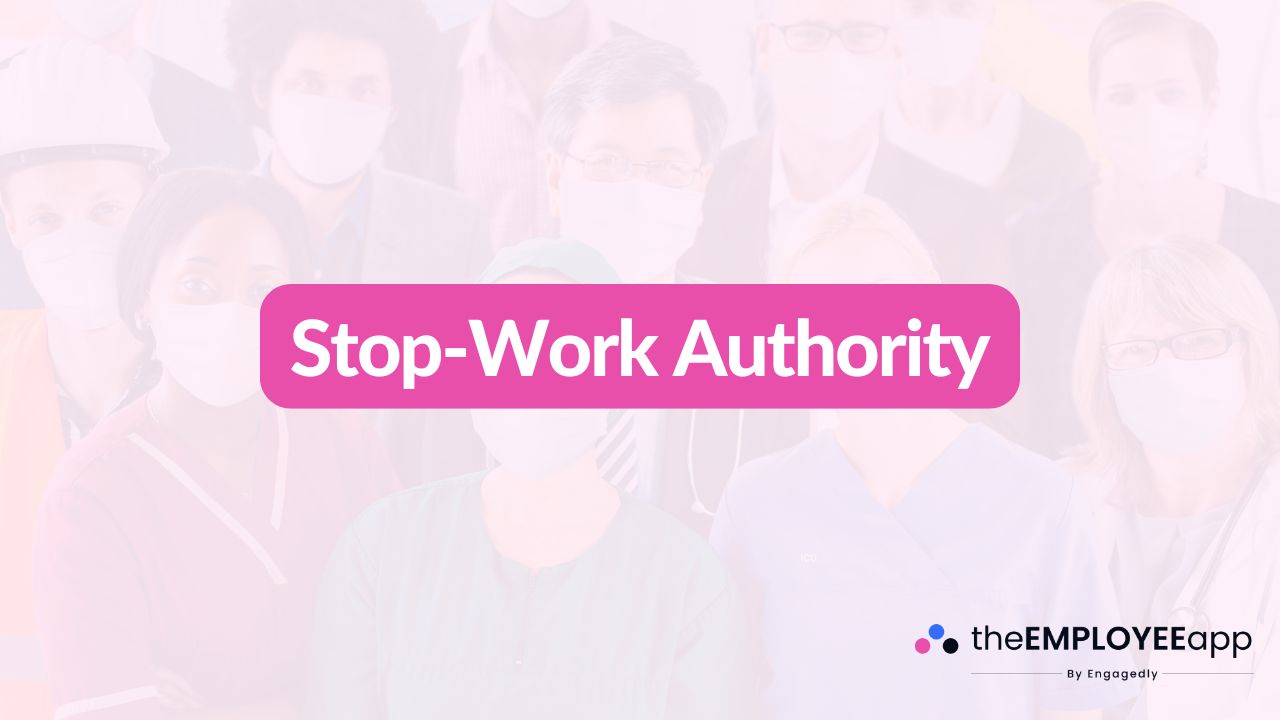
Stop-work authority (SWA) is a workplace safety policy that gives employees the right—and responsibility—to stop work immediately if they identify unsafe conditions, hazards, or practices that could lead to an accident or injury. This authority empowers workers at every level, not just supervisors or managers, to take action in the moment to protect themselves, their coworkers, and company assets.
Stop-work authority is a proactive approach that prioritizes safety over productivity. Rather than waiting for leadership to intervene, employees are encouraged to act quickly and decisively whenever they feel something is unsafe.
Workplace incidents often happen in seconds, and delays in decision-making can be costly. By granting employees the power to stop work, organizations:
Prevent accidents before they occur.
Encourage shared responsibility for safety.
Create a culture of accountability and trust.
Ensure hazards are addressed in real time.
Instead of fearing retaliation for speaking up, employees feel supported when they raise safety concerns, which ultimately benefits both the workforce and the organization.
A successful stop-work authority program requires more than simply telling employees they have the right to intervene. It should be backed by clear policies, training, and leadership support. Key elements include:
Formal Policy: Written documentation that outlines employees’ rights and responsibilities to stop unsafe work.
Employee Training: Instruction on how to recognize hazards, when to exercise authority, and how to restart work safely.
Non-Retaliation Guarantee: Assurance that no worker will face punishment or negative consequences for invoking stop-work authority.
Reporting Procedures: Clear processes for documenting the incident, identifying root causes, and preventing recurrence.
Leadership Support: Supervisors and managers must encourage employees to act and model the behavior themselves.
Stop-work authority can apply to a wide range of scenarios, such as:
A worker notices that a machine is malfunctioning and could injure someone.
A team is about to enter a confined space without proper ventilation or monitoring.
Workers are asked to proceed without the required personal protective equipment (PPE).
An employee sees unsafe lifting practices that could cause strain or injury.
Hazardous materials are being handled without proper labeling or containment.
By stopping work immediately, employees can prevent these situations from escalating into serious incidents.
Implementing stop-work authority has several significant benefits for both employees and organizations:
Injury Prevention: Hazards are addressed before harm occurs.
Empowered Workforce: Employees feel confident and respected when their voices matter.
Stronger Safety Culture: Safety becomes a shared responsibility rather than management’s job alone.
Regulatory Compliance: Many industries require or recommend SWA programs as part of occupational safety standards.
Operational Improvement: Stopping unsafe practices often leads to better procedures and improved efficiency.
To ensure that stop-work authority is embraced and effective, organizations should:
Promote Awareness: Regularly remind employees of their right to stop unsafe work.
Encourage Communication: Foster open dialogue between workers and supervisors without fear of judgment.
Recognize Positive Action: Celebrate employees who use stop-work authority appropriately, reinforcing desired behaviors.
Conduct Follow-Up: After a stop-work incident, review the situation to learn from it and strengthen safety protocols.
Lead by Example: Supervisors should exercise stop-work authority themselves to demonstrate its importance.
At its core, stop-work authority reflects an organization’s commitment to prioritizing human life and safety above all else. When workers know they have the power to act without fear of retaliation, it builds confidence, trust, and mutual respect.
Over time, this approach shifts the mindset from simply “following rules” to actively protecting one another. Employees become partners in safety rather than passive participants, which strengthens overall organizational culture.
Stop-work authority is more than just a policy—it is a cornerstone of a proactive safety culture. By empowering employees to halt unsafe work immediately, organizations can prevent accidents, build trust, and reinforce the message that safety comes first. Implementing a strong SWA program not only reduces risks but also promotes collaboration, accountability, and long-term workplace well-being.
